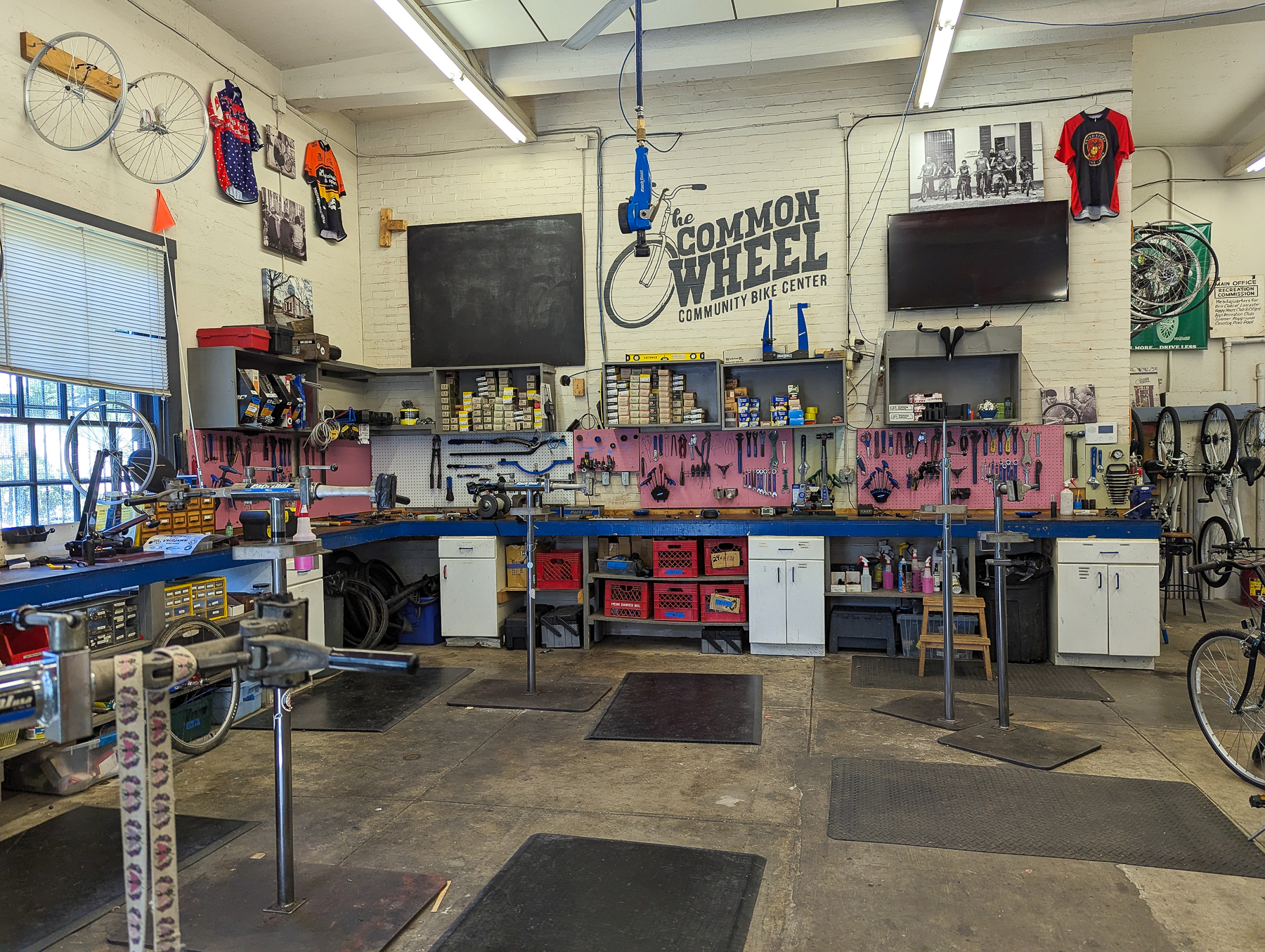9 Ways to Teach Climate Education To Kids While Traveling
Travel is a great way to see the world through a new lens and that includes matters of climate action and the climate crisis. Read on for several ways to explore climate education with kids while traveling.
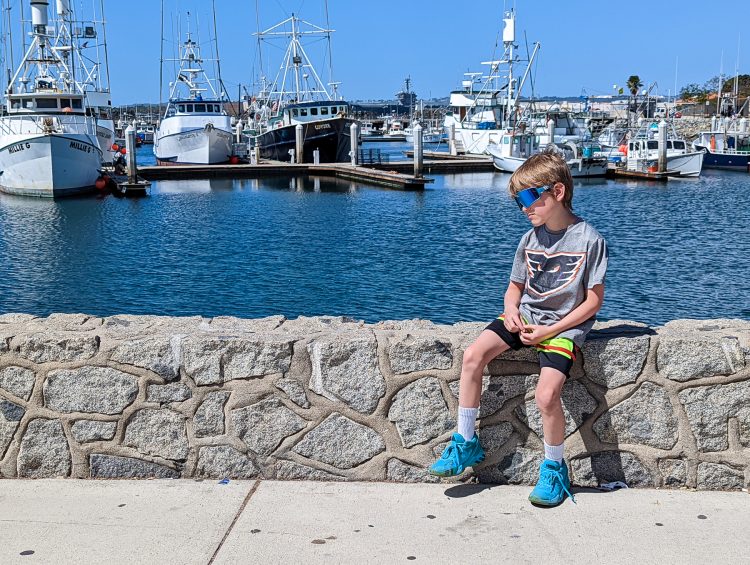
A while back, we visited family in California. We flew into Oakland, spent a few days with family, and then drove south to San Diego. Our drive down California’s Highway 5 brought us through hundreds of miles of farmland before we stopped in Los Angeles to visit a friend and ultimately finished our drive down to San Diego the following day.
With respect to climate considerations, California is quite unlike our home state of Pennsylvania. California has a different climate, faces water shortages and wildfires (both of which are becoming more severe due to climate change), and has far more progressive local climate policies than Pennsylvania. These differences offered plenty of opportunities to point out and explain, in kid-friendly ways, the implications of climate change and some potential solutions.
As you travel with kids, consider opportunities for climate education for kids based on how your travel destination handles and is impacted by climate matters and climate action. Below, I’ve shared a few ideas based on our travels through California and other locations we’ve traveled with kids in the last few years. This list is certainly not exhaustive, so use these ideas as starting points to think about how your family travel experiences can inform climate education for young learners in your life.

1. Point out architectural elements with environmental benefits
As you meander through your travel destination, point out different architectural elements that also have climate benefits. Look for green roofs or green walls, especially in urban areas. Explain that these green roofs and walls absorb heat from the sun so it doesn’t reflect back into and warm our atmosphere. They also absorb water which can reduce flooding in certain areas and help reduce harmful runoff.
Notice solar panels, wind turbines, rain barrels, and compost bins in and around the area. Consider how some of these solutions might work at your home or in your community.
Show kids how houses are designed differently depending on the climate. Houses in hot climates, for example, are often painted lighter colors to reflect heat and have fewer windows to keep homes cooler without the need for as much air conditioning. Air conditioning requires immense energy, so keeping a home cooler using natural and architectural features can reduce carbon emissions from energy and save the homeowner money.
You can even check out this STEM experiment for kids my Raising Global Kidizens co-founder, Jess, created to highlight the differences in heat absorption between light and dark surfaces. This scientific principle can significantly impact architecture and landscape design based on the climate of an area and the respective changes we can expect in the coming year.
Compare Energy Generation Sources
Depending on where you are traveling, you may see large power generation plants spewing pollutants into the air or a nuclear plant blowing hot steam into the air. Alternatively, you may see an open field lined with wind turbines, a building topped with solar panels, or a dam next to a hydro-powered plant.
Point out the energy generation infrastructure and discuss how the options are similar and different to where you live. Consider the pros and cons of each energy option. Discuss whether or not we can rely on only one type of energy or if we may need a variety of energy solutions to meet our needs. Are different sources of energy good for daytime and nighttime? Will different types of weather effect which types of energy are available to us?
For additional information, be sure to check out resources over on our sister site, Raising Global Kidizens, about renewable energy sources for kids. You’ll find printable activity workbooks that include several projects about solar energy for kids and one that focuses on teaching children all about the history and science of wind power. These could even be fun resources to bring along on a road trip or plane ride.
We love reading books about climate matters too. It helps explain some complex topics in kid-friendly ways and make the ideas more relevant to them. Check out this book list that features picture books about clean energy and this list that includes several picture books about climate action. As a bonus, go green and save money when you check the books out from your local library instead of buying your own copies.
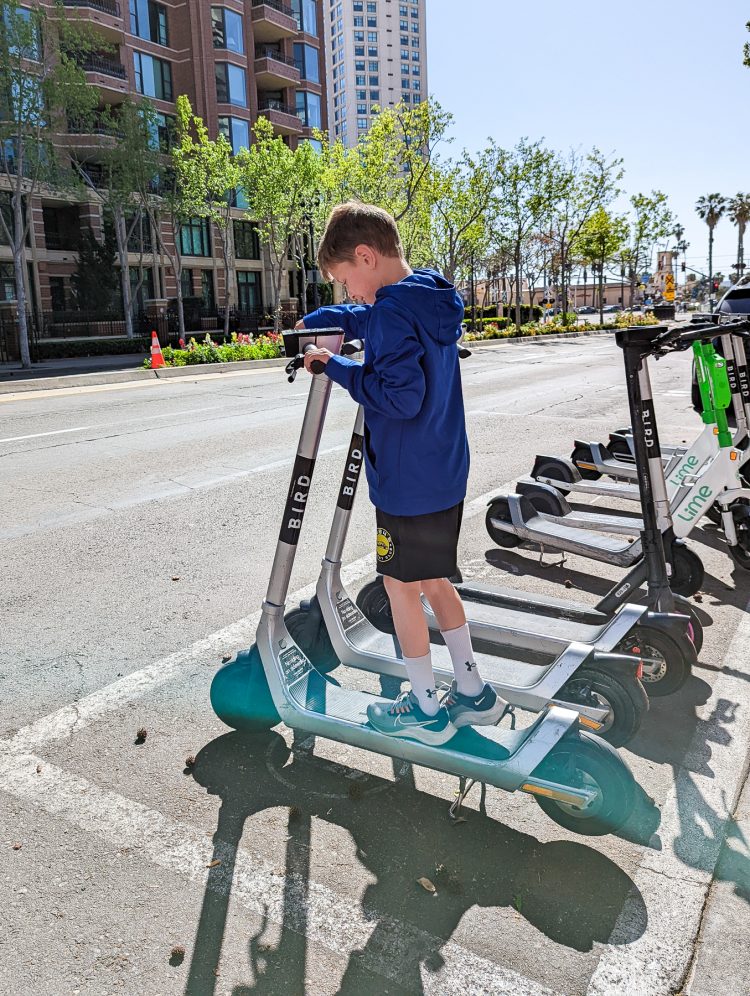
Take public transportation, rent bikes, or walk
Instead of driving everywhere, take public transportation when you can. Explain how public transportation helps reduce pollution from cars and traffic. Many people share a space so there are fewer cars on the road and less polluting emissions from all the cars.
If you’re lucky, you may even find electric-powered public transport. Look for and point out infrastructure for electric-powered buses and trains as well as chargers for electric vehicles. The more we notice these features, the more they become “normal” elements of our communities.
Rent Bikes and Ride The Town
Many cities have bike rental programs. Some hotels even offer bike rentals for free as part of your stay. Find out before your trip what is available or ask for assistance from a hotel employee, vacation rental host, or a local person you meet during your travels.
Add a biking trip to your itinerary to ensure you make the most of this fun way to see your travel destination. You can bike along nature paths, through urban areas, and in so many different types of communities.
Before we had kids, my husband and I rented bikes to ride around Sonoma, California, a wine country area that’s not necessarily a top-of-mind place to rent bikes. It was a great way to see the area and definitely a kid-friendly activity (not the wine-drinking part, of course, but certainly the biking adventure).
Discuss with your kids how bikes have no carbon emissions so they are amazing transportation options for the environment (not to mention our health). Consider questions like:
- What makes a bike a good eco-friendly transportation alternative?
- Why isn’t a bike always a great solution (need to travel on a highway, steep hills, distance is too long)?
- What could we change about a bike to make it better for traveling for families? (add a basket to carry things, use e-bikes so you don’t get so tired/sweaty when you ride and you can travel farther, and create more bike lanes and paths)
Try Riding Scooters
Scooters for rent are all the rage in some cities now. When we visited California, we took the boys around the city on electric scooters. You can often pick them up and drop them off at various points around the city and sign them out using an app on your phone. The boys had a blast. I’m pretty sure it was one of the highlights of the trip.
Explore Your Destination on Foot
Walking is such a great way to really see a new town. It’s nice to travel at a slow enough pace to stop and see the sights. Of course, walking has no carbon footprint and is great for your health too.
Turn your travel steps into a fun adventure or competition. Count your steps with a pedometer, a Gabb Watch (our boys love theirs!), or another wearable device. See who gets the most steps by the end of the day or the trip. Set a family goal to reach a certain step milestone during your vacation.
Not only is walking great for the environment, but it also provides more opportunities to notice local businesses and support the local economy as you peruse around town and peak in the windows of small shops and restaurants you might otherwise have missed.
As you enjoy the city in ways that produce low or no carbon emissions, discuss with your kids why these ways are good for the community and the planet at large.
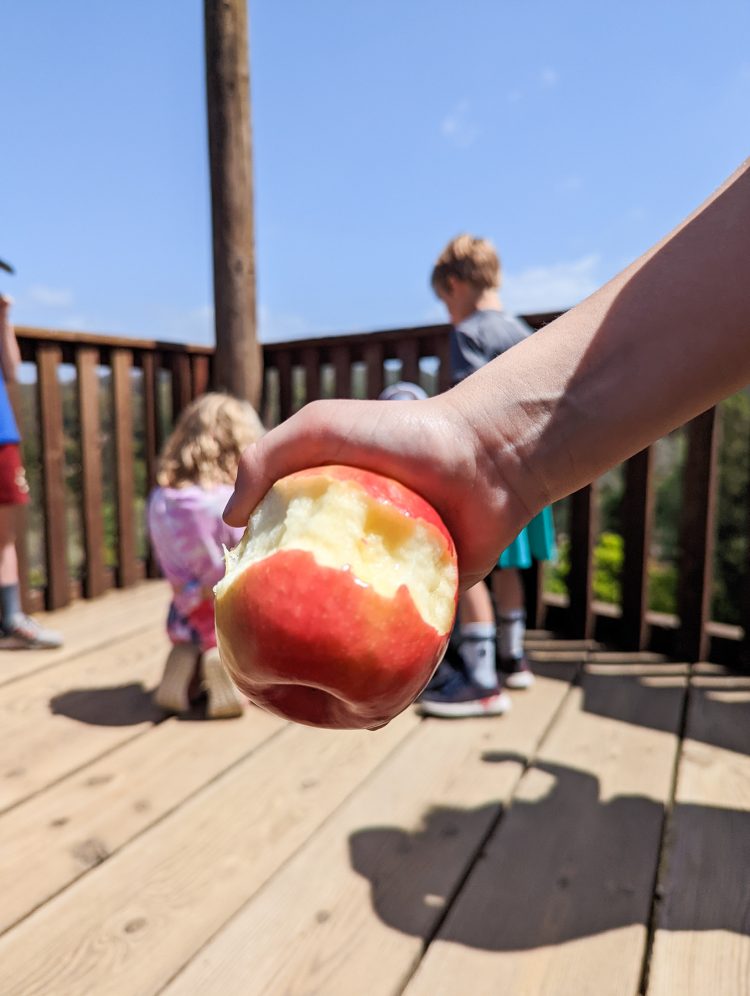
Eat local foods and discuss why it reduces carbon footprint when food doesn’t travel so far.
To the extent available, check out the local food markets and restaurants around your travel destination. Buy breakfast or lunch at a local farmers market, and discuss with your kids why it’s helpful to eat food that travels a shorter distance from farm to table.
The carbon footprint of certain foods is immense. Many of us eat produce that traveled across multiple continents and oceans before landing on our plate, which can bear a heavy toll on the environment (and the food quality).
While in Oakland, we went to the farmers market for lunch one afternoon and snacked on local, organic strawberries and raspberries while waiting in line for roasted chicken and pizza from local vendors. Our lunch wasn’t a fancy, plated course at a pretty table. Instead, we ate a variety of delicious foods while sitting on the grass and taking in the energy of the vendors and customers at the market.
Bring your own water bottles and find refillable water stations (if possible), especially at airports
Eco-friendly living 101: Bring your own water bottle. Have each family member carry their own water bottle during your trip. So long as the water is clean where you are traveling, fill it up at airport water bottle filling stations. Use ice from hotel ice machines and water from the hotel tap (municipal water supplies are often some of the cleanest water we drink).
Look for filling stations at public parks. Empty extra water from meals into your water bottles before leaving so you don’t waste it and don’t have to pay for single-use water bottles later. You can also check out the website Tap, a crowdsourced water refill station database, to find places to refill your water bottles on the road.
We use millions of water bottles each day, and they are piling up in landfills and the ocean. Few are recycled, and even recycled water bottles can only be recirculated through the system a handful of times before they are no longer sufficient to produce usable recycled material.
Discuss with your kids why it’s important not to waste the water. We have a limited supply of fresh, potable (i.e. drinkable) water. Show them photos of overflowing landfills and the Great Pacific Garbage Patch, full of (among other things) plastic water bottles that were trashed and didn’t make it to landfills. Help them understand that single-use plastic is often unnecessary, and we have so many money-saving, eco-friendly alternatives.
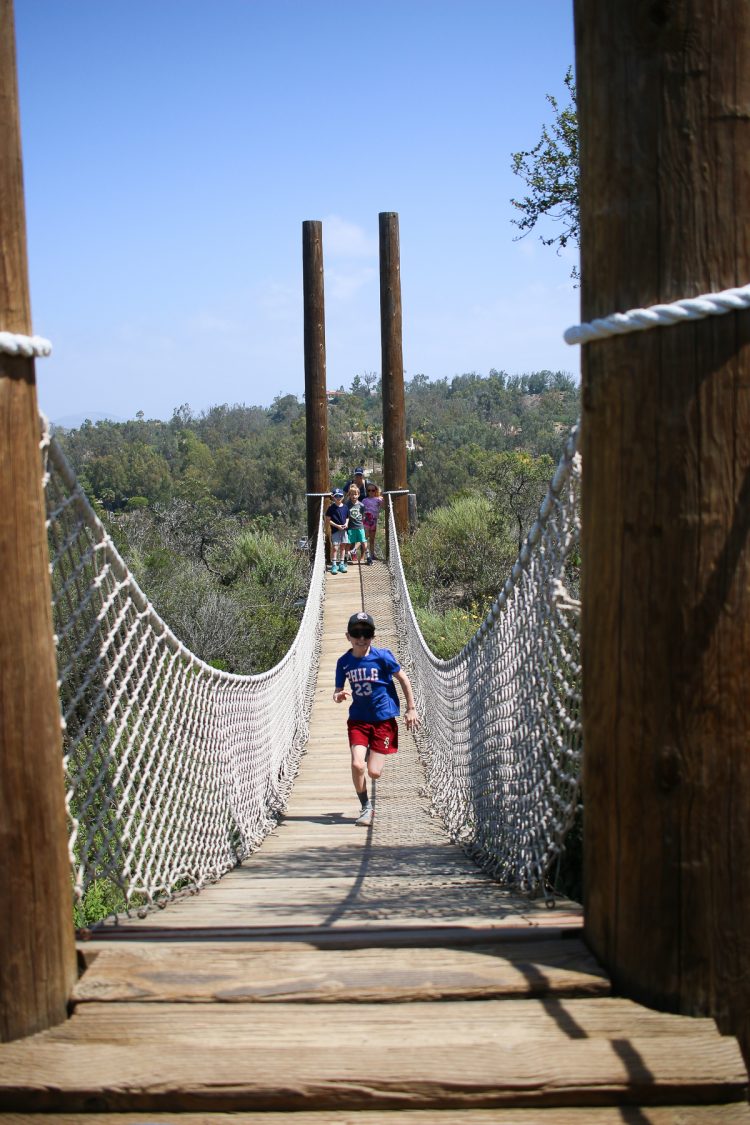
Measure the Carbon Footprint of Your Travel
Do a bit of research about your trip with your children to learn about the carbon footprint of your travel. Check out sites like Sustainable Travel to compare the carbon footprint of driving versus flying to your location.
When doing this, it’s helpful to compare the carbon footprint to something they can envision in real life such as driving your own car a certain distance at home. For example, you might say “Flying from Pennsylvania to California has the same carbon footprint as driving from our house to baseball practice X number of times. However, the carbon footprint of taking a road trip to California is the same as driving to baseball practice Y times.”
Upon arrival, compare the carbon footprint of driving to a location versus walking, renting a bike, or taking public transportation.
Compare and Contrast Climate Policies and Regulations In Your Destination
Take note of different climate-related policies in new places and how those impact everyday life. For example, my boys immediately noticed that the airports in California had compost bins next to every recycling and trash bin. We do not have these often in Pennsylvania. California has a much more robust and mature composting infrastructure due to governmental regulations.
You might also notice that some places charge extra fees for bags at stores like Target and the grocery store. In Pennsylvania, we don’t have restrictions on plastic bags in most areas where we live. They’re coming, but they’re still pretty new in most places. It was different for us to have to pay for plastic bags if we needed one at a retail store.
Discuss how these types of policies change people’s behavior and ultimately reduce waste and lower carbon emissions. Consider what might happen if you had similar policies at home? If the rules are more climate-friendly in new places, might they have rules that you could try to implement in your own hometowns?
Discuss Protest and Political Signs Related To Climate Matters
While driving down Interstate 5 in California, many large farms posted signs along the highway saying things like:
“Is water used to grow food wasted?”
“Congress is causing human-induced drought.”
“Create dams to save our farms”
While central California farmers feed millions of people in the United States and around the world, central California does not naturally have sufficient water to grow water-intensive crops. Farmers and food producers rely on complex irrigation systems that import water from sources like the Colorado River to sustain their crops.
As the severity of droughts increases and fresh water becomes more scarce, policy leaders must make difficult decisions about how to allocate a finite amount of clean water among California’s 40 million residents and business owners.
While we drove, we pointed out the signs to the boys and briefly discussed in high-level context how there isn’t enough water to share and these farmers do not feel like they are getting their fair share. Further, this issue will likely become more contentious as time passes and global temperatures increase.
Depending on the age and interest level of your young learners, you might include questions like:
- How do you think the farmers feel about not getting enough water?
- How would you feel if you were the farmers?
- What are some potential solutions? (grow different crops, the government helps farmers transition to new crops and types of farming, give more water to the farmers)
- Do you think there should be different solutions for farms owned by individual families compared to commercial farms owned by large corporations?
- How do residents of southern California feel? (Central California farmers share their water supply with southern California residents.)
- What are some potential solutions for the residents in urban areas who may not get enough water? (reduce water usage, switch to native vegetation, recycle water supplies, use gray water systems)
- What could happen if they don’t reach a resolution? (Farmers can’t grow crops and don’t make money – lose jobs and lose food, farmers protest more actively, violence, some people think the next Civil War in the United States will be over water – and this could be the beginning of the battle).
Some of the above are big, complicated questions. Be mindful of the ages and maturity of your kids. You know best what will resonate with them and what might overwhelm them.
Note: Discussion of the environmental impacts of monoculture farms like those we drove past in central California is incredibly complex and out of scope for this article, but how and where we grow our food has monumental climate impacts. Often, we should discuss not only how much water is allocated to a particular place, but also if the methods and crops grown in a particular place are really the best alternatives.
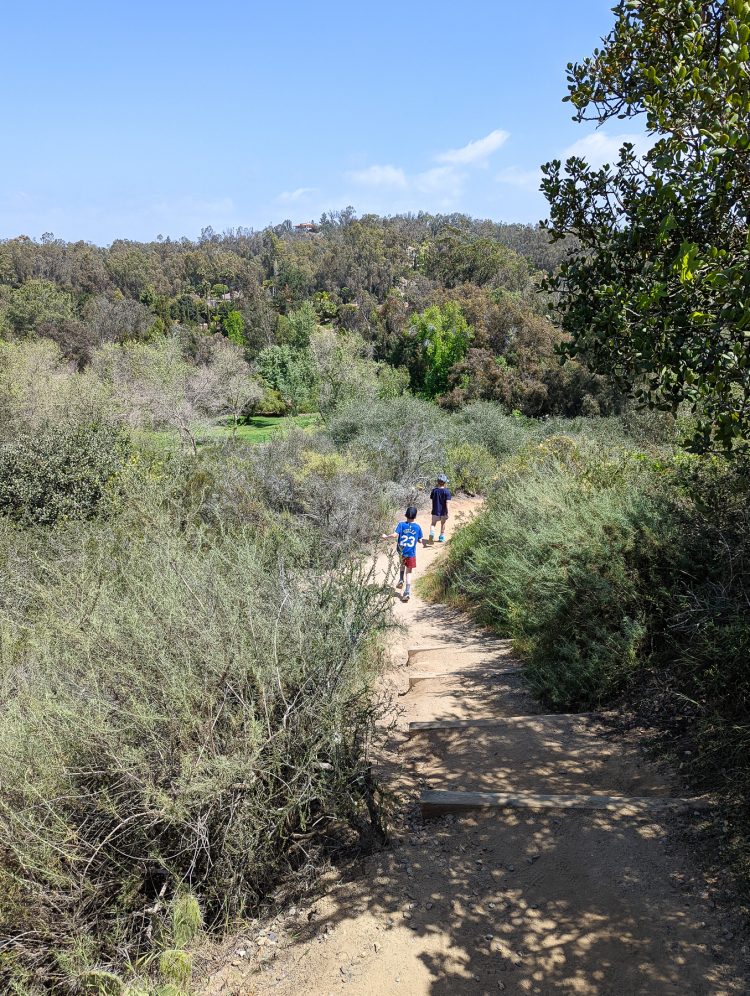
Notice Different Native Species & Discuss Why They Work In Different Climates
California has a variety of climates, but the parts of California where we traveled are much drier than Pennsylvania. While California has many hot, dry desert areas and arid mountains, Pennsylvania gets plenty of rain and is home to dense forests and lush, green vegetation.
As we walked to the park, I showed the boys some of the native cacti and other dry-climate plants that grow well in California. Many residents forego turf grass and plant succulents in their yards. These thrive in the California sun but wither in Pennsylvania winters. More importantly, succulents and other native desert plants don’t require much water.
Comparing common plants in California to those we see at home offers kids a chance to understand how having a yard full of native succulents in California, for example, reduces the water usage required to maintain a yard in a state that experiences regular water shortages. Meanwhile, Pennsylvania yards supporting our own native species will look very different. Choosing native plants is a great way to make the most of the climate in a particular area and reserve resources for more important uses.
You might discuss some of the following questions to take the conversation a step further.
- What types of vegetation do you see on vacation?
- How does this compare to the plants you see at home?
- What characteristics make native plants suitable for each location? (succulents don’t require a lot of water in dry areas, deciduous trees drop leaves to go dormant in cold winters and rebuild the soil for a new life, evergreen trees stay green and offer homes for animals in the winter, and each set of plants protects native wildlife or create habitats for native wildlife which supports biodiversity, etc…)
Climate Education While Traveling Can Also Happen At Home
A lot of these discussions and experiences you can have at home too, but incorporating them into travel offers another angle on the issues, shows how people in other places experience a different version of the same challenges or opportunities, and offers new ways of tackling the same problems depending on where you live
As you visit new places, notice and point out how the areas you visit are taking climate action in ways that make sense for their communities. How else might you help kids learn about climate change while traveling?
If You Like Climate Education While Traveling, You Might Also Like
28 Green Travel Tips For Eco-friendly Road Trips with Kids
Can You Take a Family Roadtrip in an Electric Vehicle?
Sustainable Family Travel | Flying vs. Driving vs. Staying Home

Jen Panaro
Jen Panaro, founder and editor-in-chief of Honestly Modern, is a self-proclaimed composting nerd and advocate for sustainable living for modern families. To find her latest work, subscribe to her newsletter, Stepping Stones.
In her spare time, she’s a serial library book borrower, a messy gardener, and a mom of two boys who spends a lot of time in hockey rinks and on baseball fields.
You can find more of her work at Raising Global Kidizens, an online space to help parents and caregivers raise the next generation of responsible global citizens.



